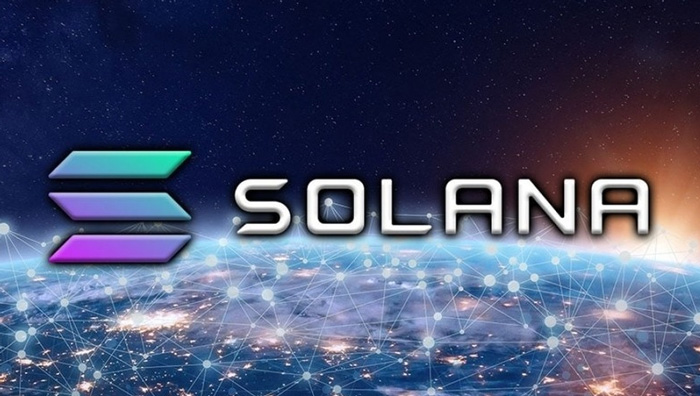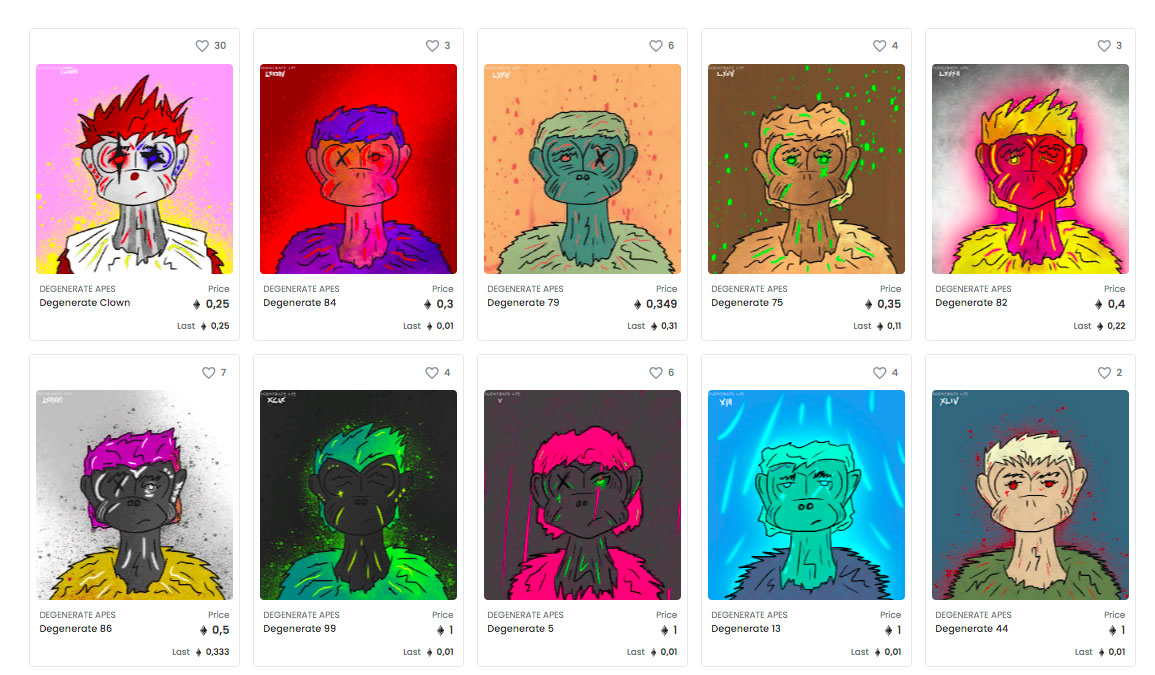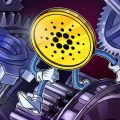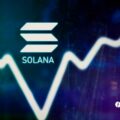
In 2021, the price of the SOL cryptocurrency of the Solana blockchain platform increased in price by 45 times. Moreover, only for the lastmonth SOL cost increased by 2.6 times, and on August 17, it even reached its all-time high at $ 74 per coin. As a result, the Solana project entered the top 10 in terms of capitalization on CoinMarketCap.
Against the backdrop of this rally, we decided to understand the reasons for the increase in the value of the SOL token, and also found out what the features of Solana are and what are the prospects for the development of this project.
What makes Solana unique and how is the project evolving?
Solana is a high-speed open-source blockchain platform for running decentralized applications (dApps) and smart contracts, one of the main competitors of Ethereum.
Solana's key competitive advantage is its high scalability and low fees. During the tests it was found thatnetwork bandwidth is from 50,000 to 191,000 transactions per second, block generation time is from 400 ms, andaverage transaction fee - $ 0.00025... In the future, the developers promise to achievespeed over 700,000 transactions per second. For comparison, in Ethereum, the throughput is 30 transactions per second, and the block generation time is 12.5 seconds.
Already now, anyone can verify the high speed of Solana by playing a special game.
Work on Solana began in 2017.Then the former developer of the Qualcomm corporation and the Dropbox company Anatoly Yakovenko first published the white paper of the Solana project. In the document, he described the Proof-of-History consensus algorithm he developed, which will be discussed below.
Soon Yakovenko, together with his former colleaguefrom Qualcomm, Greg Fitzgerald, now Solana's chief technology officer, and Eric Williams, a Ph.D. in physics, opened Solana Labs, which began developing the project.
The project got its name in honor of Solana BeachBeach near San Diego, which Yakovenko often went to. The project team is based in San Francisco, California. It includes former employees of Qualcomm, Google, Apple, Microsoft and Dropbox.
In April 2018, the developers launched the firstSolana testnet version. At the same time, Solana Labs conducted a seed round of investment, and in July 2019, it raised more than $20 million from venture investors in a Series A round.
Beta version of the test network with basicSolana developers launched transaction capabilities and smart contract functions in March 2020. That same month, the Solana team conducted an initial coin offering (ICO), during which they managed to raise $1.76 million.
In June 2020, the non-profit organization Solana Foundation was created, which began developing the project’s ecosystem and popularizing it, as well as attracting third-party developers.
A year later, in June 2021, Solana Labs raised another $ 314.15 million in a private round of the coin sale. The round was led by Andreessen Horowitz and Polychain Capital.
Today the Solana platform is still running inbeta version, but this does not interfere with the fact that over 350 projects have already been launched on it. The largest of the DeFi projects: the automated market maker Raydium, the decentralized exchange Serum, owned by the youngest crypto billionaire Sam Bankman-Fried, and the aggregator Solfarm.
Solana also powers such dApps as the cross-chain aggregator O3Swap, the Launchpad platform for Solana projects SolStarter, the Arweave decentralized data storage protocol, and the Oxygen broker protocol.
Since March 2020, Solana has been in partnershipwith the blockchain oracle, Chainlink is developing a super-fast, low-cost oracle. And in September, the USDT stablecoin was launched on the Solana blockchain. In October, a cross-chain bridge between Solana and Ethereum was developed, allowing the transfer of assets from one blockchain to another. At the same time, in partnership with Circle, the issuer of USDC, USDC was launched on the Solana blockchain.
How does the Solana blockchain work?
Solana's ultimate goal is to solve the scaling trilemma: create a decentralized network that is simultaneously fast, scalable, and secure.
The Solana blockchain has 8 major innovations that differentiate it from other networks.
1. Proof-of-History.Solana uses a combination of two algorithmsconsensus: Proof-of-Stake (PoS) and developed specifically for Solana Proof-of-History (PoH). In the latter, different nodes operate in parallel and independently of each other, but at the same time synchronize with each other to ensure security. This allows the network to support thousands of nodes simultaneously, scaling its throughput proportionally. Unlike other similar projects, such as Polkadot, Solana has only a single blockchain without the addition of child blockchains (sidechains or parachains).
Formally, Proof-of-History is not an algorithmconsensus, but a blockchain synchronization algorithm that allows nodes to agree on the time order of events in the chain without exchanging data with each other.
It is worth noting that node synchronization is one of thethe main problems of decentralized networks. To confirm operations, the nodes must write a block with them to the blockchain. To do this, they exchange data, validate transactions and synchronize (reach consensus). The catch is that it takes a long time, and as a result network bandwidth suffers. For example, the maximum speed of Bitcoin is 7-10 operations per second. Proof-of-History allows nodes to sync much faster.
At the same time, blockchains have built-in clocks,which allow you to set a timestamp - a timestamp for block recording (date and time). But they are imprecise—there is no central clock to refer to. As a result, nodes may synchronize incorrectly and a new block will appear before the previous one.
In centralized systems, the entire systemuses a single internal clock. For example, in Google, databases are synchronized using atomic clocks, in Yandex - using a central NTP server. But in Proof-of-History, time is measured in hashes.
So, if in other blockchains the consensusis reached by agreement of miners or validators, then each validator in Solana has its own clock. Proof-of-History is a decentralized clock that synchronizes time across all nodes. The use of Proof-of-History proves that the transaction occurred at a specific moment. At the same time, the blockchain nodes work according to a single schedule (Leader Schedule).
This is how the synchronization between nodes in Proof-of-History works:
- The validator becomes the leader according to the Leader Schedule. He will be it within a strictly allotted time - 1,000 hashes (4 blocks or 1.6 seconds);
- Gulf Stream and Turbine solutions (which will be discussed below) split transactions into parts (batch);
- The leader validator verifies and confirms transactions and passes parts of the data (transaction parts - batch) to two random validators;
- The two validators validate their portions of the transactions using digital timestamps as a reference, merge the transactions and pass them on to the rest of the validators;
- Then another validator becomes the leader. He will be them for the next 1,000 hashes.
This scheme allows you to reduce the block mining timejust up to 400ms and eliminates the risk of orphan blocks (mined but not included blocks for which the validator does not receive a reward). A similar mechanism is used in database solutions from Google and Intel. But Yakovenko found a way to apply it to decentralized systems. It is expected that in the future Proof-of-History will be able to be used by centralized systems.
2. Tower BFT.This is optimized for Proof-of-Historyversion of practical Byzantine fault tolerance (pBFT, practical Byzantine fault tolerance), a variant of the consensus algorithm based on Proof-of-Stake (PoS). Therefore, formally Solana works on PoS, but based on the “decentralized clock” Proof-of-History. This allows consensus to be achieved without wasting time and resources on calculating timestamps of previous operations and exchanging messages between all validators.
3. Gulf Stream Protocol.This is a protocol that forwards transactionsto the next leading validators before the previous set of transactions is completed, without transferring them to the mempool (the list of transactions awaiting confirmation). As a result, future leaders may start collecting transactions before they start producing blocks. This increases the speed of work and also reduces the size of the mempool and the blockchain itself.
4. Turbine protocol- splits information about operations into several parts.
5. Sealevel algorithm— Allows parallel execution of several smart contracts.
6. Pipelining— acceleration of transaction verification at the GPU core level. This allows you to quickly check information about transactions in all network nodes.
7. Cloudbreak Account Database— optimizes memory usage on validator devices, preventing data from taking up too much space.
8. Archivers - distributed storage.Validators upload data to a special networknodes - the so-called archivers. Archivers do not participate in reaching consensus, since each of them stores part of the data (batch), and not all of it. Periodically, archivers must prove that they are still storing their data. This system is reminiscent of the one used in Filecoin. For archivers, simple devices such as laptops or PCs are sufficient.
Cryptocurrency SOL
SOL is the internal cryptocurrency of the project.It is used to pay transaction fees on the Solana blockchain and operations with smart contracts. In the future, it is also planned to use SOL to vote on changes to the project.
SOL is a popular staking coin.Unlike other PoS cryptocurrencies, there is no need to block the minimum stake to be a validator on the Solana blockchain. But the more coins in the stake, the greater the profitability, and also the higher the chances of becoming a validator-leader. Also, coins can be provided to one of the 1,342 validators - then the yield will be higher. You can stake through a native or third-party crypto wallet, for example, Ledger.
Currently, the average staking profitability isabout 6% per annum. The rate may be higher if you stake coins through an exchange. For example, the profitability of SOL staking on Binance depends on the freezing period and the size of the stake and ranges from 24.5% to 43.8% per annum.
SOL trading started in April last year. During this time, the price of the coin increased 88 times - from $0.77 to $72. Currently, the cryptocurrency is among the top 10 digital assets by capitalization - $21.2 billion.
Last year the coin did not enjoy strongin demand among investors - its price ranged from $0.5 to $4.8. The growth was fueled by the news that popular crypto derivatives exchange FTX had launched the Serum decentralized exchange on the Solana blockchain.
As a result, from the beginning of the year a rapidSOL rally - from January to May, the price of the coin grew from $1.84 to $55.9. After May 18, following the fall of Bitcoin and the entire crypto market, the asset fell by half in just a few days, after which it tried unsuccessfully for two months to reach the $40 mark.
A new rally began on July 20 after reaching a local low of $23.49 - also along with the growth of Bitcoin and the entire market. Over the past month, the coin has grown 2.6 times - from $25.77 to $72.74.
</p>Reasons for the current SOL rally
The current rally began along with the overall growthcrypto market. Also, the rise in SOL quotes was facilitated by the fact that by mid-August the growth of other popular cryptocurrencies had slowed down, and investors switched to large, but undervalued projects that lagged behind the leaders in growth rates. So, along with SOL, XRP, ADA and DOGE have been growing well in recent weeks.
The SOL rally also has objective factors:
- At the end of July, Solana Labs sponsored the Lollapalooza music festival;
- On August 4, the Star Atlas metaverse launched the NFT marketplace Galatic Marketplace on the Solana blockchain;
- On August 9, Wormhole (translated as “Wormhole”) was launched - a decentralized bridge protocol between Solana and other leading DeFi projects, including Terra, Ethereum and Binance Smart Chain;
- 12 August Mango Markets, spot platformmarkets, lending and perpetual futures, built on the basis of Solana, raised $ 70.46 million during the token sale. Mango Markets receives liquidity from its own pools and the Serum decentralized exchange, also powered by Solana;
- On August 15, a new NFT project, Degenerate, was launchedApe Academy on the Solana blockchain. A collection of 10,000 unique cartoon monkeys sold out in just eight minutes on the Solanart marketplace. Now monkeys are only available on the secondary market, for example, on the OpenSea NFT marketplace. The highest price per character already exceeds SOL 100,000 - over $ 6.8 million at current prices.

Solana's perspective
Solana is a promising project that attractsattention of both partner companies and investors. Solana is suitable for resource-intensive systems and applications focused on a large number of users and transactions: exchanges, marketplaces, file storages.
The alpha version of the network has not yet been launched, but the project is already in the top 10 in terms of capitalization - this is an excellent indicator.
Solana doesn't have a clear roadmap right now.In March, Anatoly Yakovenko noted in an interview that almost everything that could go wrong with the development of the project went wrong. The project team has an ambitious goal of attracting a billion users and is confident that Solana will cope with this load.
Among the immediate technical goals is to reduceblock generation time is only up to 80 ms, and the trading timeframe (the timeline for displaying stock quotes) on DEX is only up to 1 ms (for comparison, the smallest trading timeframe on Binance is 1 minute). Yakovenko also noted that when DEXs become more efficient than centralized exchanges, the latter will switch to using a decentralized blockchain, which ensures this higher efficiency.
But the presence of the most innovative technologies isthere's more to come in the crypto sector. Solana's bright future is far from guaranteed. Even with all its advantages, the project is unlikely to displace Ethereum from the throne of the king of tokenization. Moreover, competitors, for example, Algorand, Cardano or Polkadot, are hot on its heels and have already launched mainnets.
Time will tell whether Solana will be able to solve the scalability trilemma and attract the desired billion users to its ecosystem.
Where can you buy Solana tokens? TOP-5 exchanges
For a safe and convenient purchase of cryptocurrencies with a minimum commission, we have prepared a rating of the most reliable and popular cryptocurrency exchanges that support deposits and withdrawals of funds inrubles, hryvnias, dollars and euros.
The reliability of the site is primarily determinedtrading volume and number of users. By all key metrics, the largest cryptocurrency exchange in the world is Binance. Binance is also the most popular crypto exchange in Russia and the CIS, since it has the largest cash turnover and supports transfers in rubles from bank cardsVisa / MasterCardand payment systemsQIWI, Advcash, Payeer.
Especially for beginners, we have prepared a detailed guide: How to buy bitcoin on a crypto exchange for rubles?
Rating of cryptocurrency exchanges:
| # | Exchange: | Website: | Rating: |
|---|---|---|---|
| 1 | Binance (Editor's Choice) | https://binance.com | 9.7 |
| 2 | FTX | https://ftx.com | 7.5 |
| 3 | Bybit | https://bybit.com | 7.2 |
| 4 | OKEx | https://okex.com | 7.1 |
| 5 | Exmo | https://exmo.me | 6.9 |
The criteria by which the rating is set in our rating of crypto-exchanges:
- Work reliability— stability of access to all functions of the platform, including uninterrupted trading, deposits and withdrawals of funds, as well as the duration of the market and daily trading volume.
- Commissions– the amount of commission for trading operations within the platform and withdrawal of assets.
- Platform capabilities- availability of additional features: futures, options, staking, NFT, etc.
- Feedback and support– we analyze user reviews and the quality of technical support.
- Convenience of the interface– we evaluate the functionality and intuitiveness of the interface, possible errors and failures when working with the exchange.
- final grade– the average number of points for all indicators determines the place in the ranking.

Rate this publication




